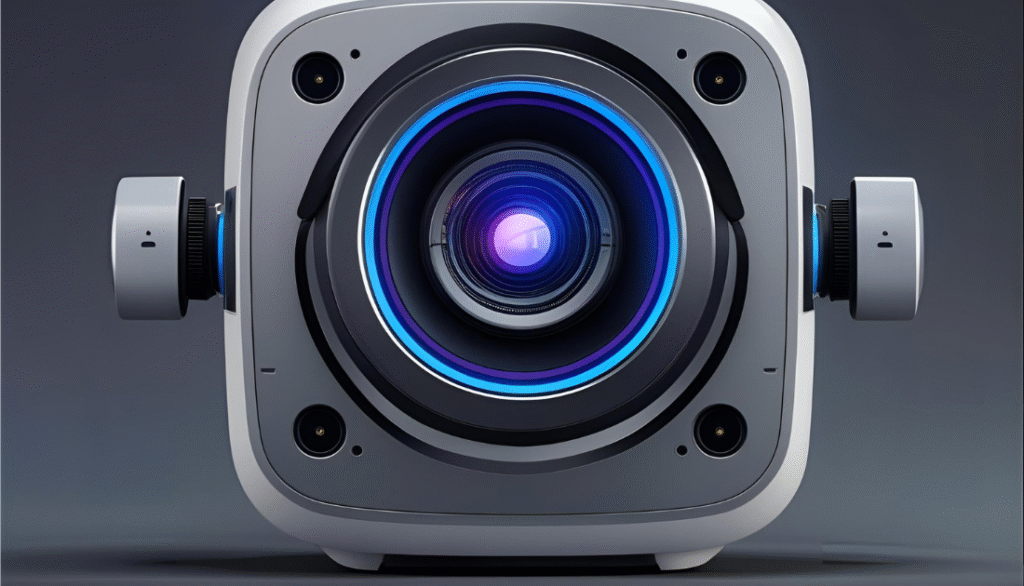After 14 years as an Intel research initiative, RealSense has officially spun out to become an independent company, marking a new phase in the evolution of its stereoscopic imaging technology.
Highlights
- Independent Company: After 14 years under Intel, RealSense has spun out as a standalone startup with a $50 million Series A round led by Intel Capital and MediaTek Innovation Fund.
- Agility and Speed: The move enables faster product development and greater flexibility in serving fast-evolving markets like robotics, automation, and spatial AI.
- Core Tech Focus: RealSense specializes in high-precision, real-time stereoscopic 3D vision, essential for robotics, drones, AR/VR, and biometric systems.
- Diverse Applications: Its tech is used by over 3,000 companies, including Chipotle (food inventory tracking), fish farms (volume measurement), and access control systems using depth-enhanced facial recognition.
- New Product Launch: The D555 camera introduces enhanced AI spatial perception, a single-cable design, and easier deployment across robotics and industrial settings.
- Global Impact: RealSense reportedly powers 60% of the world’s autonomous mobile robots, including robots from Unitree Robotics and ANYbotics.
- Funding Goals: The new capital will support expansion in Asia, grow the go-to-market team, and fund deeper R&D into human-machine interaction and embedded AI.
- Strategic Vision: RealSense aims to become a foundational layer for AI-powered 3D spatial computing across industries—especially in robotics, logistics, and healthcare.
- Leadership Shift: CEO Nadav Orbach, a former Intel CPU architect, is embracing the startup world to drive innovation at a faster, more agile pace.
Backed by a $50 million Series A round led by Intel Capital, MediaTek Innovation Fund, and other strategic investors, the company plans to accelerate product development, expand globally, and strengthen its position in the growing AI vision market.
A Shift Toward Independence for Greater Agility
The decision to spin out was driven by a need for speed and scalability. RealSense CEO Nadav Orbach, a long-time Intel executive and CPU architect who began working on vision systems in 2011, said that operating independently allows the company to respond more quickly to market demands.
“It was clear that staying within a large organization was starting to slow us down,” Orbach noted. “This move gives us the agility to better serve customers in fast-moving sectors like robotics, automation, and AI.”
Intel’s continued support, including encouragement from former CEO Pat Gelsinger, played a key role in making the transition possible.
High-Precision, Real-Time 3D Perception
RealSense specializes in stereoscopic depth cameras that combine infrared sensing and optical tracking to deliver accurate real-time 3D perception.
This technology enables machines to understand their environments in three dimensions, a foundational requirement across robotics, autonomous vehicles, drones, and biometric systems.
“All our use cases have one thing in common—they require real-time, high-accuracy 3D understanding of the physical world,” Orbach explained.
Expanding Into Diverse
With more than 3,000 customers worldwide, RealSense’s tech is being used well beyond traditional robotics. Notable examples include:
- Chipotle, which uses RealSense with AI partner PreciTaste to monitor food supply levels
- Fish farms, which employ the sensors to measure pen volumes for livestock management
- Security and access control, where facial recognition and identity verification benefit from enhanced depth sensing
New Products and Enhanced Spatial Computing Capabilities
As it charts its course as a standalone company, RealSense is prioritizing product innovation. The newly released D555 depth camera features:
- Enhanced AI-driven spatial awareness
- Single-cable design for both power and data
- Improved deployment simplicity
According to Reuters, RealSense technology currently powers 60% of the world’s autonomous mobile robots (AMRs) and humanoid robots, including devices from Unitree Robotics and ANYbotics.
Funding to Drive Global Growth and Manufacturing Scale
The $50 million Series A will support:
- Expansion in Asia, where much of the hardware is manufactured
- Growth of the go-to-market team
- Continued R&D in human-robot interaction, security systems, and embedded AI vision
Leading in 3D Vision for AI and Robotics
With the spinout, RealSense is positioning itself at the intersection of 3D spatial computing and real-time AI systems. The company is focused on making 3D perception a core infrastructure layer for:
- Robotics and automation
- Human-machine safety interactions
- Next-generation biometric security
Orbach, reflecting on his shift from corporate leadership to startup founder, called the experience “humbling but energizing.”
“I’ve been with Intel for most of my career, but raising funds as a first-time CEO and launching a company from the inside out is a new challenge—one that I’m incredibly excited about.”


